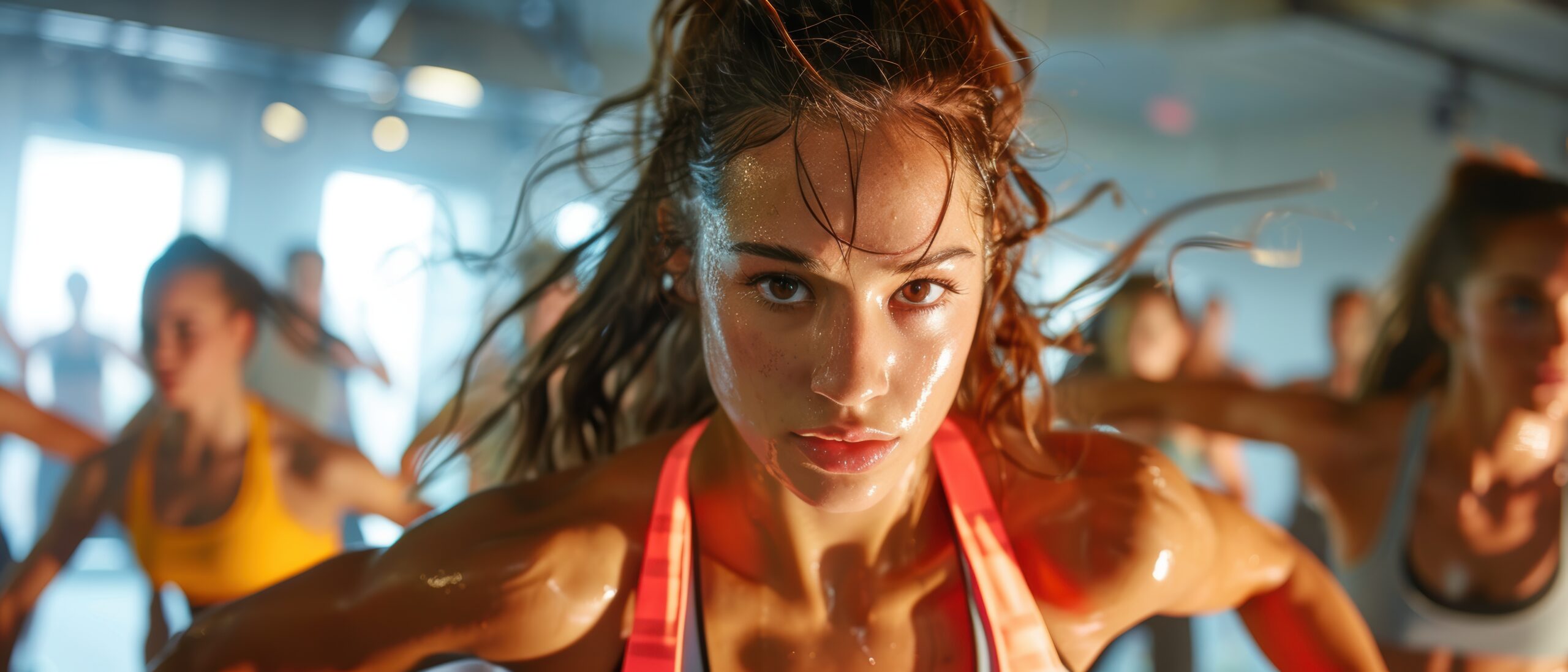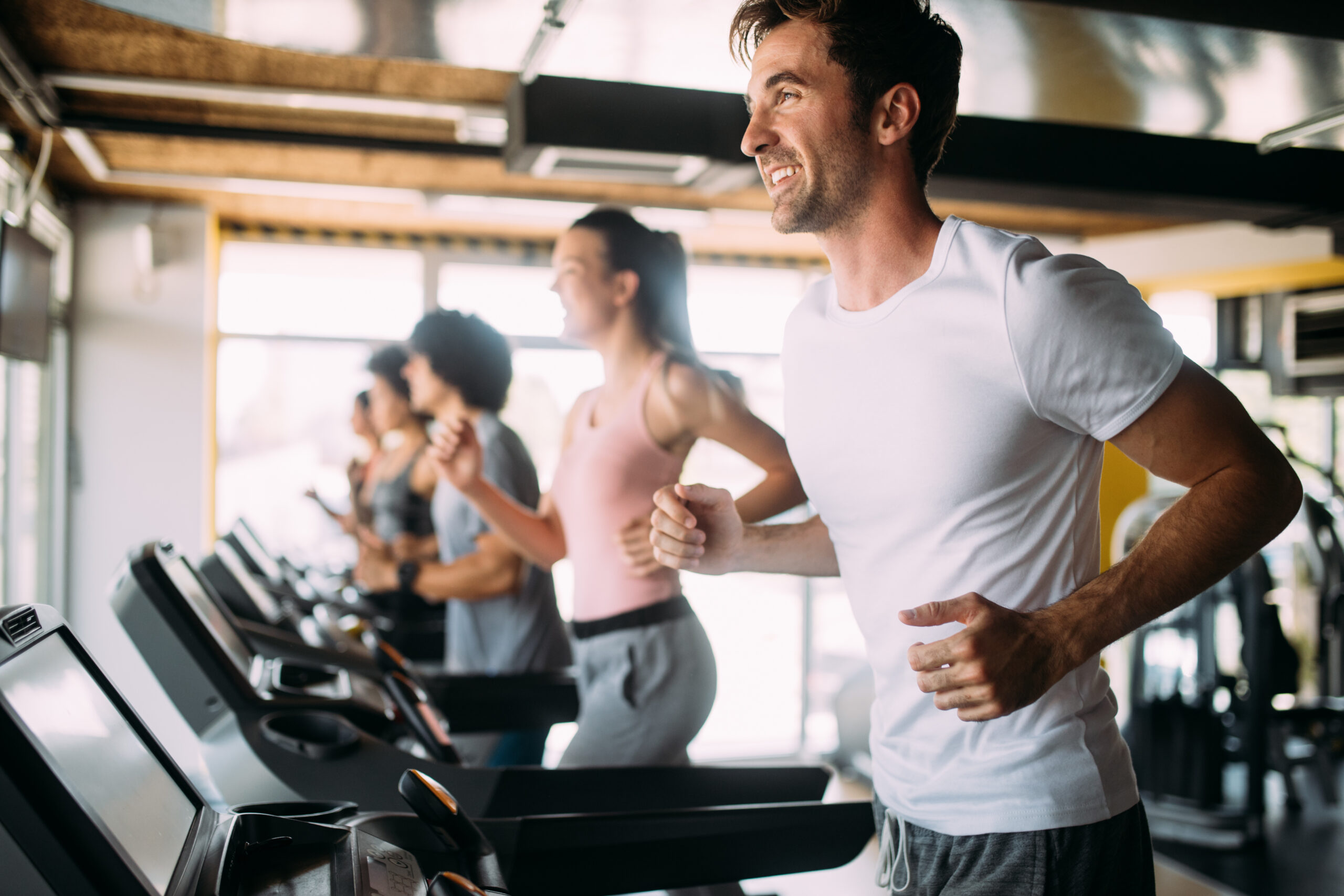Archive for the ‘Foods’ Category
How to Add Cross Training to Your Workouts
Originally published on HVMN by Nate Martins.

Dedicated training is something to be admired. Many athletes strive for the ability to get up and get out every single day whether it’s for a specific race or event or even, simply driven by a goal. Often that can mean adhering to a training plan based on both repetition and incrementally increased difficulty–monotony and overuse be damned.
But you may get hurt. Or plateau. Or experience a disruption in your training schedule. These can all be detrimental to accomplishing a goal. Then there’s also that inevitable boredom of doing the same training day in and day out. You swear that footprint on the trail was yours from yesterday.
Enter cross-training, an exercise program usually employed outside of these intense training blocks to add some variance (physically and mentally) to workouts. It keeps the body guessing, and has many athletes reap the benefits for their main sport: decreased injury potential, and added strength to the most-used muscles.
Here, we’ll detail the science behind cross-training, how to work it into your schedule, and some new exercises to try. Your main sport will thank us.
This is Your Body on Cross Training
Simply put, cross training is training in another discipline in improving your main sport. The options are almost limitless–runners can strength train, swimmers can paddle board, cyclists can do yoga. The goal is to supplement your main sport with training that’s beneficial for certain muscles, movements, or even, your brain and mood.
For most athletes, the inclusion of cross training into a workout plan is triggered by an injury sidelining them from regular training. I was no different–hours of basketball and running led to knee pain (from patellar tendonitis, known as “runner’s knee” or “jumper’s knee”). But I was stubborn. When I should have stopped the joint-pounding activities, I continued to beat them like a drum. It got to a point where the pain wasn’t worth the workout, but I couldn’t give up working out all together. So I started swimming and incorporating yoga into my routine, which delivered positive and painless results.
Turns out, I’m not alone. Up to 56% of recreational runners experience injuries, with most of those relating to the knee.1 Supplements can help (like glucosamine, which promotes the development of cartilage), but up to 75% of those are overuse injuries.1

Since a majority of injuries happen due to time dedicated to a single sport, cross training can help prevent injuries for the simple fact that it forces athletes to spend less time training singularly. Cross training doesn’t just maintain activity by reducing the risk for injury–it also can increase performance.
A study of 27 male runners were assigned one of three different resistance training regimens (in addition to their normal endurance training): heavy resistance, explosive resistance or muscle endurance training. In all three groups, running endurance performance increased.2 The heavy-lifting group, in particular, saw improvements to high-intensity running characteristics, like sprinting at the end of the race.2
The benefits of cross training aren’t just physical; there’s also a potential mental benefit of switching it up. Mental fatigue can impact physical workouts–you may be less likely to workout knowing that you’re facing the exact same exercise every day. Especially if an athlete is in-season or training for a specific event, cross-training can provide an exciting challenge. It’s easy to be training heads-down; cross-training can help you see the forest between the trees.
Implementing Cross Training
Divorce yourself from the idea that cross training takes away from your regular training schedule. While you’ll inevitably be spending time away from your sweetheart sport, absence makes the muscles grow stronger.
There are three main groups of cross training for endurance athletes: strength training, aerobic low-impact work, and aerobic impact work, and each can be part of a cross-training program.
Strength Training
Touching upon all major muscle groups is important for effective strength training.
Incorporating strength training into an endurance regimen can enhance physical fitness, as it did in this meta-analysis of distance runners.3 Even just 30 minutes per week, once or twice a week, can suffice. And it doesn’t necessarily have to be done in a gym; you can take the at-home approach to incorporate plyometrics or things like push-ups.
Regardless of where you strength train, a full body workout will maximize the time you spend training. Consider hitting all the major muscle groups such as arms, chest, shoulders, back, core and legs (more on this later).
Aerobic Low-Impact Work
Probably the reason many athletes experiment with cross-training: take stress off those weary joints and reduce injury risk.
Low-impact activities or no-impact workouts can be done two or three times a week. It’s easily implemented, as it can replace an active recovery day or even a harder workout day depending on the exercise; so for those who think they’re losing gains because of cross-training, you may actually find yourself enjoying the cross training more than your main exercise.
Cycling, swimming, and rowing are some of the most popular low-impact workouts. For flexibility and core exercises, yoga and pilates are go-tos. And you may even be able to work out longer and more frequently using these types of workouts due to the lack of stress they cause the body (swimmers can work out every day, and they’re hitting all the major muscle groups). For example, if you planned on running 45 minutes, you could easily spend 70 minutes cycling.
Aerobic Impact Work
Maybe the reason you’re reading this article is because of too much aerobic impact work.
If you’re training, the amount of aerobic impact work will likely be higher (and maybe your only focus during that training block). But in the off-season, or times when you’d like to give your body a break, aerobic impact work should be done once or twice a week. As a general rule, cross-training is meant to limit the impact on the body.
Typically, cross training is meant to offer your body a break from the impact it faces during regular training. You can play team games, train runs, circuit train or do CrossFit as a cross-training method, as the impact is likely different from your normal routine. But be mindful: any impact work still puts a strain on the body.

The Importance of Rest
Before getting into the specific exercises to try, remember the need for rest. Your muscles are asking for it.
The goal of every training session is to break down muscle and without recovery, a portion of that work might be wasted. During recovery, the body begins the process of rebuilding what has been broken down.
Muscle protein synthesis can increase by as much as 50% in the hours after a workout, helping encourage muscle growth.4 Concurrently, muscle fibers are rebuilt. These processes are a normal part of the exercise, and recovery allows the muscles to become stronger. Fluid restoration is also key, as it helps deliver nutrients to organs and muscles through the bloodstream. And acids (via that hydrogen proton associated with lactate) accumulate during workouts–so recovery provides time for the body to restore intramuscular pH and blood flow for oxygen delivery.
In-season, professional triathlete, Kelsey Withrow, is laser-focused on training. When she’s not training, it’s all about recovery.
“As a professional triathlete, I focus all my time on swimming, running and biking. The rest of the time is for recovery.”
-Kelsey Withrow, professional triathlete
Even though cross training is meant to give the body a break from regular training, it’s still is a source of stress and requires recovery time (or you might burnout). For most athletes, it’s difficult to slow down. Many of us are goal-oriented, hardworking and ultimately–a bit stubborn. Budgeting recovery time is essential, as is providing your body with the necessary fuel to recover properly.
Supplementing recovery may help expedite that process and get you back in the saddle faster. HVMN Ketone has been shown to improve recovery by decreasing the breakdown of intramuscular glycogen and protein during exercise (when compared to carbs alone).5 It also expedited the resynthesis of glycogen by 60% and protein by 2x when added to a normal post-workout carb or protein nutrition.6,5
Doing the same exercise can be mentally exhausting, leading to mental fatigue that wears down on your desire to even do the workout. Research has shown that the mind is usually a good gauge of the body,7 with a mental strain reported by a questionnaire being closely related to stress signals in the hormones of the body. By switching it up with cross-training, and also ensuring rest days, the mind will get a chance to recharge too.
Cross Training Exercises
Now is the time to incorporate cross-training workouts. The exercises below touch on several different areas of exercise, from strength training to both low-impact and impact aerobic activities.
You can begin by folding in some additional exercises to your existing workouts. Runners may try hills or cyclists may try 30-second sprints–this isn’t cross-training exactly, it’s just extra training. The benefits of cross training come with learning something new and focusing on different areas of the body that regular training can neglect.
Try working some of these exercises into your routine. It’s important to pick which is best for your personal needs.

Swimming
Benefits: Aerobic and cardio workout without the joint or muscle impact
Concerns: Technical ability can limit the quality of training
How to try it: Ensure you have the proper equipment (goggles, swim cap, fins, etc.), check lane times at your local pool, familiarize yourself with technique
A great whole body workout, swimming is one of the low-impact exercises most often used for recovery or cross training. Interestingly, reports show many people enjoy water-based exercise more than land-based exercise.8
Swimming works the whole body; it increases heart rate without the joint-pounding stress of running, it builds endurance and can also build and tone muscle. Because of these benefits, it’s a great option for recovery–a study showed that patients with osteoarthritis showed reduced stiffness, joint pain, and overall less physical limitation.9
It also torches calories. Swimming has shown improved body weight and body fat distribution when compared to walking.10 An average person can burn almost 450 calories when swimming at a low or moderate pace for one hour. At an increased pace, that could go north of 700 calories. For comparison, running for one hour at a leisurely pace burns about 400 calories.
Outside of the aerobic benefits, swimming (and water training, like deep-water running) has shown to improve cardiovascular health and lung capacity.11,12,13
To incorporate swimming into your cross-training routine, first find a place to swim. Then gather the necessary tools (like goggles, swim cap, fins, etc.), and brush up on the form before jumping in the pool. Try it one to three times a week for 30 minutes to start.

Cycling
Benefits: Low impact, aerobic, and strength building
Concerns: Risk of injury and cost of equipment
How to try it: For outdoor cycling, get a bike properly fitted and map your cycling route. Or find a bike / spin class at your local gym. For beginners, try cycling 45 minutes to an hour
Another low impact workout, cycling is a great way to reduce stress on those joint while still clocking in the aerobic hours.
Similar to swimming, cycling burns calories at an impressive clip, anywhere from 400 – 1,000 per hour depending on the intensity of the ride. And since cycling is also a resistance exercise, it’s not just burning fat–it also builds muscle.
A systematic review analyzed the benefits of cycling, showcasing a myriad of results. There was a positive relationship between cycling and cardiorespiratory fitness, cardiovascular fitness, and general fitness.14 Whether on the road, the track, or in the gym on a stationary bike, the benefits of cycling as a cross-training mechanism stem from the fact it’s a low impact, muscle building, aerobic workout. It can help athletes train if they have experienced an injury.
There are several ways to train on a bicycle. You can ride hills to build muscle and strength, or do shorter sprints to build speed. There’s also an option for endurance, with riders cycling hundreds or thousands of miles over the course of a long session. For beginners, get a feel for the workout on a stationary bike. As you advance, visit a local bike shop to get your bike properly fitted.

Strength Training
Benefits: Increased muscle strength, bone density, injury prevention, mental health
Concerns: Improper form and too much weight can lead to injury
How to try it: Find a gym with the proper equipment and build a training plan, picking exercises that target both the upper and lower body.
Many endurance athletes don’t consider strength training as part of their workout routine, but it can help prevent injury while improving strength for your main sport. For runners, maybe that’s improved core strength for economy. For cyclists, maybe the outcome is a higher power output. Regardless of your sport, strength training is imperative to improving endurance for runners15 and cyclists.
In a study of postmenopausal women, high-intensity strength training exercises showed preserved bone density while improving muscle mass, strength and balance.16 It can also help prevent injury. In a study of soccer players who strength trained in the offseason, hamstring strains were lower (and that group also saw increases in strength and speed).17
“You spend so much time beating your body down in-season, but I find that I’m healthier and stronger when I lift. With long distance, being strong helps. I try to put on a lot of muscle during a short period of time.”Kelsey Withrow, professional triathlete
The mental benefits of resistance training have also been documented; studies have shown it improves anxiety and depression.18,19
A good strength training regimen will focus separately on different muscle groups. There are several options for lifters of all different levels, but starting with some simple bodyweight exercises (like push-ups or pull-ups) can allow you to build toward free weight training, weight machines, or rubber tubing. A meta-analysis of periodized training–varying your strength training workouts–has shown results for greater changes in strength, motor performance and lean body mass.20 So don’t get stuck doing the same routine over and over again. A good way to push yourself is to incorporate overload training into some of that strength work.
If you’re strapped for time, a full-body workout once or twice a week (with dedicated recovery time) should suffice. Make sure to also spend some time nailing down form in the weight room, as improper form and too much weight can lead to injury.

Yoga
Benefits: Increased strength, mobility, flexibility, and mood
Concerns: Improper form can lead to injury
How to try it: Find a studio and pick a class level that’s appropriate for your skill level.
An ancient practice designed to create a union between the body and mind, many athletes seek out yoga for its ability to increase strength and flexibility while also promoting mental health benefits.
Yoga can improve performance by targeting specific aspects of flexibility and balance–one study, which took place over the course of 10 weeks in male collegiate athletes, saw improvements in both balance and flexibility.21 In older adults, studies have shown improved balance and mobility.22 Strength is also a target of many yoga programs, especially in the core. Even a study in which a specific pose (sun salutation) was used six days per week for 24 weeks, participants saw increased upper body strength, weight loss and endurance.23
But with yoga, the body is only half the game. It has been shown to decrease cortisol levels (the stress hormone),24 along with the ability to lower levels of depression, stress, and anxiety.25 There have even been studies which showed overall quality of life improvements in seniors.26 Maybe part of these mental benefits are linked to better sleep quality. One study illustrated that a group participating in yoga fell asleep faster, slept longer and felt more well-rested in the morning.27
Yoga isn’t an aerobic workout, but it stretches muscles, builds strength and has been shown to improve mood. Because it’s low-impact, yoga can be done every day. Typically gyms or studios have beginner classes, and they will typically last between 60 and 90 minutes. Athletes can use yoga as recovery days, so between one and three sessions per week would be perfect.
Remember: listen to your body. Athletes always want to push the limit, and many may scoff that yoga is difficult (compared, say, to running). But extending a stretch too far, or practicing yoga without learning form, can lead to injury.

Other Exercises
There are different activities that may be considered cross training, outside of the usual suspects we detailed above.
Hiking, for example, is a great way to build strength and get outside during a recovery day. Same goes with exercises like kayaking or stand-up paddle boarding28–these can help build upper body strength while encouraging an athlete to get out of their comfort zone (literally, and figuratively).
“I spend a lot of time training indoors, so getting outside is a lot of fun. I’ll do one long run per week outside, and I’ll bring my dog. It’s a reset for me.”Kelsey Withrow, professional triathlete
We wouldn’t recommend team sports because there’s a risk of injury. But tennis might be an exception. While there are of course injury concerns with every sport and exercise, tennis has shown to improve aerobic fitness, lower body fat percentage, reduce risk for developing cardiovascular disease and improve bone health.29
For more passive cross training, think about everyday things you can do to improve strength and balance. Even investing in a standing desk, or sitting on a medicine ball at work can encourage better posture and more movement overall.
Cross Training for Athletes
During peak training season, athletes feel the grind. You’re putting in the hours with a race or event or goal in mind, laboring over the same path, the same laps, the same routine, with little variance.
Cross training is meant to serve as a break, but one that’s productive. It can be a break from your normal routine, both physically and mentally. But it can also invigorate the mind, providing it with a new task to learn, a new challenge to face. And of course, the physical benefits of testing the body in new ways are evident.
To incorporate cross training, try one or more of these exercises a couple times a week. See how you feel. You’ll likely find one you enjoy more than others, one that maybe provides better results than the rest. It’ll take some time to find a balance.
What’s your cross training routine? Let us know in the comments and share your experience.
Improve your running form...
With exercises backed by science. Be first to know when we release our training guide about running cadence.
Scientific Citations1. Van mechelen W. Running injuries. A review of the epidemiological literature. Sports Med. 1992;14(5):320-35.
2. Mikkola J, Vesterinen V, Taipale R, Capostagno B, Häkkinen K, Nummela A. Effect of resistance training regimens on treadmill running and neuromuscular performance in recreational endurance runners. J Sports Sci. 2011;29(13):1359-71.
3. Yamamoto, Linda M; Lopez, Rebecca M; Klau, Jennifer F; Casa, Douglas J; Kraemer, William J; Maresh, Carl M. The Effects of Resistance Training on Endurance Distance Running Performance Among Highly Trained Runners: A Systematic Review. Journal of Strength and Conditioning Research: November 2008 – Volume 22 – Issue 6 – p 2036-2044 doi: 10.1519/JSC.0b013e318185f2f0.
4. MacDougall JD, Gibala MJ, Tarnopolsky MA, MacDonald JR, Interisano SA, Yarasheski KE. The time course for elevated muscle protein synthesis following heavy resistance exercise. Can J Appl Physiol. 1995 Dec;20(4):480-6.
5. Holdsworth, D.A., Cox, P.J., Kirk, T., Stradling, H., Impey, S.G., and Clarke, K. (2017). A Ketone Ester Drink Increases Postexercise Muscle Glycogen Synthesis in Humans. Med Sci Sports Exerc.
6. Vandoorne, T., De Smet, S., Ramaekers, M., Van Thienen, R., De Bock, K., Clarke, K., and Hespel, P. (2017). Intake of a Ketone Ester Drink during Recovery from Exercise Promotes mTORC1 Signaling but Not Glycogen Resynthesis in Human Muscle. Front. Physiol. 8, 310.
7. Steinacker JM, Lormes W, Kellmann M, et al. Thaining of junior rowers before world championships. Effects on performance, mood state and selected hormonal and metabolic responses. J SPORTS MED PHYS FTTNESS 2000;40:327-35.
8. Lotshaw AM, Thompson M, Sadowsky HS, Hart MK, Millard MW. Quality of life and physical performance in land- and water-based pulmonary rehabilitation. J Cardiopulm Rehabil Prev. 2007;27(4):247-51.
9. Alkatan M, Baker JR, Machin DR, et al. Improved Function and Reduced Pain after Swimming and Cycling Training in Patients with Osteoarthritis. J Rheumatol. 2016;43(3):666-72.
10. Cox KL, Burke V, Beilin LJ, Puddey IB. A comparison of the effects of swimming and walking on body weight, fat distribution, lipids, glucose, and insulin in older women–the Sedentary Women Exercise Adherence Trial 2. Metab Clin Exp. 2010;59(11):1562-73.
11. Broman G, Quintana M, Engardt M, Gullstrand L, Jansson E, Kaijser L. Older women’s cardiovascular responses to deep-water running. J Aging Phys Act. 2006;14(1):29-40.
12. Cider A, Sveälv BG, Täng MS, Schaufelberger M, Andersson B. Immersion in warm water induces improvement in cardiac function in patients with chronic heart failure. Eur J Heart Fail. 2006;8(3):308-13.
13. Sable M, Vaidya SM, Sable SS. Comparative study of lung functions in swimmers and runners. Indian J Physiol Pharmacol. 2012;56(1):100-4.
14. Oja P, Titze S, Bauman A, et al. Health benefits of cycling: a systematic review. Scand J Med Sci Sports. 2011;21(4):496-509.
15. Hoff J. Maximal Strength Training Enhances Running Economy and Aerobic Endurance Performance. Medicine & Science in Sports & Exercise: May 2001; Volume 33 ,Issue 5, p S270
16. Miriam E. Nelson, PhD; Maria A. Fiatarone, MD; Christina M. Morganti, MD; et al. JAMA Otolaryngol Head Neck Surg. 2015;141(5):428.
17. Askling C, Karlsson J, Thorstensson A. Hamstring injury occurrence in elite soccer players after preseason strength training with eccentric overload. Scandinavian Journal of Medicine & Science in Sports. 2003; 13(4);244-250
18. Gordon BR, Mcdowell CP, Hallgren M, Meyer JD, Lyons M, Herring MP. Association of Efficacy of Resistance Exercise Training With Depressive Symptoms: Meta-analysis and Meta-regression Analysis of Randomized Clinical Trials. JAMA Psychiatry. 2018;75(6):566-576.
19. Gordon, B.R., McDowell, C.P., Lyons, M. et al. Sports Med (2017) 47: 2521. https://doi.org/10.1007/s40279-017-0769-0
20. Fleck SJ. Periodized Strength Training: A Critical Review. Journal of Strength and Conditioning Research. 1999l;13(1).
21. M Jay Polsgrove, Brandon M Eggleston, and Roch J Lockyer. Impact of 10-weeks of yoga practice on flexibility and balance of college athletes. Int J Yoga. 2016 Jan-Jun; 9(1): 27–34. doi: 10.4103/0973-6131.171710
22. Tiedemann A, O’rourke S, Sesto R, Sherrington C. A 12-week Iyengar yoga program improved balance and mobility in older community-dwelling people: a pilot randomized controlled trial. J Gerontol A Biol Sci Med Sci. 2013;68(9):1068-75.
23. Bhutkar MV, Bhutkar PM, Taware GB, Surdi AD. How effective is sun salutation in improving muscle strength, general body endurance and body composition?. Asian J Sports Med. 2011;2(4):259-66.
24. Katuri KK, Dasari AB, Kurapati S, Vinnakota NR, Bollepalli AC, Dhulipalla R. Association of yoga practice and serum cortisol levels in chronic periodontitis patients with stress-related anxiety and depression. J Int Soc Prev Community Dent. 2016;6(1):7-14.
25. Michalsen A, Grossman P, Acil A, et al. Rapid stress reduction and anxiolysis among distressed women as a consequence of a three-month intensive yoga program. Med Sci Monit. 2005;11(12):CR555-561.
26. Oken BS, Zajdel D, Kishiyama S, et al. Randomized, controlled, six-month trial of yoga in healthy seniors: effects on cognition and quality of life. Altern Ther Health Med. 2006;12(1):40-7.
27. Manjunath NK, Telles S. Influence of Yoga and Ayurveda on self-rated sleep in a geriatric population. Indian J Med Res. 2005;121(5):683-90.
28. Schram B, Hing W, Climstein M. The physiological, musculoskeletal and psychological effects of stand up paddle boarding. BMC Sports Sci Med Rehabil. 2016;8:32.
29. Pluim BM, Staal JB, Marks BL, Miller S, Miley D. Health benefits of tennis. Br J Sports Med. 2007;41(11):760-8.
8 Foods To Keep Diabetes Away
Articles November 15, 2018

Yesterday(11/14/2018) was World Diabetes Day. Help your shoppers keep their blood sugar balanced
Diabetes is caused by an imbalance in blood sugar and impairment of insulin use, often called insulin resistance. Insulin is similar to a key that opens the door to let much needed fuel (glucose) into our cells. When we have too much blood sugar, due to diet and stress, insulin does not respond as well, and can lead to increased blood sugar readings and type 2 diabetes. High blood sugar is very inflammatory, and people with diabetes may develop serious complications such as heart disease, stroke, kidney failure, blindness, and premature death.
Here are eight foods that help balance blood sugar.
Apples. An apple a day may not only keep the doctor away but may also keep insulin balanced. Apples are also loaded with quercetin, known for it’s ability to reduce the risk of diabetes and heart disease.
Beans. They may just be the ideal plant based food: protein, fiber, vitamins, and healthy fats. In addition, the fiber in beans helps you balance blood sugar levels while providing steady, slow-burning energy. Studies of high fiber diets and blood sugar levels have shown the dramatic benefits.
Berries. One of the most blood sugar friendly fruits, berries are an excellent source of quercetin, a flavonoid, which has been shown to reduce blood sugar levels. Berries are also rich in fiber.
Chocolate. Yes, you read that right! Cacao, raw unsweetened chocolate, improves insulin sensitivity. It’s loaded with vitamins, minerals, and powerful antioxidants. When shopping, look for raw cacao beans, nibs or powder. You can use it in a smoothie, or instead of coco powder in recipes. Get creative!
Cinnamon. Real cinnamon called Ceylon cinnamon has been clinically proven to stabilize blood sugar and to have a healing effect on the pancreas. Studies have shown that eating just a ½ teaspoon of cinnamon a day can make cells more sensitive to insulin and convert blood sugar into energy more easily.
Oatmeal. A breakfast favorite, and for good reason. The fiber in oatmeal helps curb appetite, decreases risk for both colon cancer and high cholesterol, can help balance blood sugar.
Sweet potatoes. These spuds are deceivingly sweet, but are a rich source in complex carbs. Complex carbs help to slow the release of glucose in your blood stream to even out the spikes and dips that cause mood and energy imbalances and ultimately more sugar cravings.
Vinegar. This pungent liquid is not just for salad dressing (or cleaning the house), it actually does appear to help with blood sugar control. Arizona State University’s Nutrition Program Director, Carol Johnston PhD has been studying apple cider vinegar for years and believes it can have pronounced affects on blood sugar. Johnston says that the vinegar prevents at least some dietary starches from being digested and thus raising blood sugar.
Keep in mind that having a diet rich in all fruits and vegetables will help contribute to a healthy blood sugar balance!
Author Phil Lempert -Supermarketgurur®
Cognitive health
Cognitive health: A lifelong opportunity
When considering various aging topics, such as overall physical health, retirement funds, health care expenses, sufficient energy and maintaining weight, one issue consistently ranks as the most important matter among American adults: mental/brain health.
Over the past 12 years, the importance of cognitive health has grown more than 20 percent (from 61 percent in 2005 to 74 percent in 2017) among all American consumers, according to data from the Natural Marketing Institute (NMI).
Cognitive Health a Lifelong Concern for Adults
While conventional wisdom may hold that brain health is a concern reserved for later in life, NMI’s Healthy Aging Database® (HAD) revealed that recognizing the importance of cognitive health is not limited to older generations; in fact, cognitive health is important to all generations. While matures (aged 71 and older) place the highest level of importance on cognitive health (84 percent), millennials (ages 20 to 39)—even more so than Generation X (ages 40 to 51)—also exhibit high levels of concern (73 and 70 percent, respectively). And 66 percent of Boomers state that mental/brain health is a very important issue.
Put in perspective, cognition issues are the top concern among U.S. adults after heart problems. Concern over cognitive health in the general adult population is higher than concern over Alzheimer’s Disease. Whereas Alzheimer’s is generally accepted as a genetic disease primarily affecting seniors, cognitive health is perceived as lifelong health maintenance that has the potential to be maintained or improved.

With the proliferation of brain games, smart foods and cognitive dietary supplements available on the market, consumers have ample options from which to choose their personalized plan.
The Fear Factor
Just under half the American population (46 percent) fear losing mental/brain capacity as they age. The level of fear has remained relatively consistent during the past dozen years, suggesting that fear of losing cognitive capability is being more accepted (or just something that will have to be dealt with if an issue arises). Fear of cognitive decline increases with age, with 42 percent of millennials fearing such loss, compared to over half of Boomers and matures.
Triple Threat—the Relationship Between Cognitive Health, Stress and Anxiety
Management and treatment of memory, concentration and cognitive function remained stable over the past decade among most adults, however it is steadily increasing among millennials, up almost double from 2007 to 2017. Currently, millennials (7 percent) and Gen X (8 percent) report the highest levels of managing memory, concentration and cognitive functions, compared with fewer than 6 percent of Boomers reporting that they currently treat these cognitive functions. Not surprisingly, millennials and Gen X also claim to manage significantly more stress and anxiety than Boomers. According to NMI’s 2017 HAD, one-quarter of millennials and Gen X treat stress, compared to less than 13 percent of Boomers. Similarly, anxiety is treated by 27 percent of millennials and 22 percent of Gen X, significantly more than Boomers (12 percent). Could there be a link between stress, anxiety and cognitive health, especially among younger generations that may be feeling the pressure to prove themselves and/or perform in the workplace and among their peers?
Opportunities for Change, Disrupting Deterioration
Eight out of 10 adults feel they are taking more personal responsibility for their health now compared to 10 years ago. Of those, two-thirds agree one reason they are taking more responsibility is so they can be in their best mental health; Boomers (71 percent) and matures (73 percent) are only slightly more likely to agree than their younger counterparts.
Millennials and Gen X think proactively regardless of whether they act on their beliefs. Forty-one percent of millennials and Gen X are significantly more likely than other generations to strongly agree they desire a nutritional supplement or ingredient to keep memory and brain function healthy. Given that those under 40 are looking for solutions, this makes them a receptive target market for cognitive supplements or fortified food and beverage products. This compares to one-third of Boomers, suggesting either their lack of belief in supplement efficacy for cognitive health, or concern that it may be “too late” to effect a meaningful change.
Nearly three-fourths (74 percent) of U.S. adults feel mental/brain health is important. Compared to satisfaction levels, a wide gap is clear. On average, only one-third (32 percent) of adult consumers are very satisfied, creating unmet need states and respective opportunities across the supply chain.

Lack of satisfaction compared to perceived importance is consistent across all age groups. Millennials (43 percent difference), Gen X (42 percent), Boomers (43 percent) and matures (39 percent) all show large gaps between importance of and satisfaction with cognitive health. Based on these gaps, consumers may benefit from products and services geared toward mental performance at all stages of their adult lives. With the addition of their proactive beliefs, consumers under 40 are prime targets for many companies to provide new products and ways for consumers to maintain cognitive health and fight mental deterioration.
Cognition is clearly a lifelong challenge, which in turn creates opportunities for a health benefit platform with innovative solutions for all.
Steve French (steve.french@nmisolutions.com) is a managing partner at the Natural Marketing Institute (NMI). NMI is a strategic consulting, market research and business development firm specializing in the health, wellness and sustainability marketplace.
The Truth Behind Emotional Eating
You’re stressed about the work you see piling up around you, so you grab a bag of chips and prepare to pull an all nighter. It has happened to the best of us, but what triggers a late-night junk food eating session, and how can you put a stop to it?
The first way to cut the junk food habits is to acknowledge when the fall outs occur. If they tend to happen late at night, a study published by Brigham Young University may explain why.
According to the study, the brain’s response to food is lower the later it is. This means that those chips you decided to have as a late-night snack because you had a stressful week will not seem super satisfying.
Travis Masterson lead author of the study explains what the research concludes, “It may not be as satisfying to eat at night so you eat more to try to get satisfied.”
Recognizing that food will not stimulate your brain in the same way and therefore will seem less satisfying can help you become self aware. You may think you are hungry, but step back, drink some water, or choose a healthier option — believe us your body will thank you.
If you find yourself slipping at other times of the day, you may be eating less because you are hungry and more because you are stressed.
A recent study from Cornell University shows how people who are in high-stress situations or in a negative mood reach for junk rather than a healthy snack. The reason behind emotional eating comes from your body desiring immediate satisfaction rather than recognizing long-term goals and needs.
While stress and negativity triggers the immediate concern of turning a frown upside down, happier emotions trigger long-term goals and overall satisfaction.
How does this translate through food, you ask? Well, junk food is usually richer and results in immediate satisfaction. By creating pleasure through sweets and junk food, you are deciding to eat based on how you feel right then and there.
Reaching for food when you are in a positive mood, triggers the opposite. When you reach for a snack when you are happy, you usually prefer healthy foods because a positive mood puts weight on long term goals and healthiness.
According to the study, “When making a choice between indulgent or healthy foods, a positive mood will result in healthier food choices due to greater consideration of long term or abstract goals.”
We know everyone needs to indulge in a guilty pleasure once in a while, but being aware of not only when you are eating, but also why you are eating, could prove to make a huge difference in your habits.
Overall, both studies show that taking a step back from the kitchen, having a glass of water, and really contemplating why you are eating and what you are eating can make a huge difference in your overall diet and strategy. Self awareness is at the root of both studies and shows that sometimes eating healthy comes down to mind over matter.
Read more: http://www.cheatsheet.com/health-fitness/the-truth-behind-emotional-eating.html/?a=viewall#ixzz3l3qUkht8
You Can’t Judge a Food by Its Color – or Can You?
I remember the first time I heard about artificial food coloring. I was about 8 years old, and my friends and I had been told that Bubble Yum bubble gum (only THE best bubble gum on the planet) was going to be pulled from the shelves because it contained Red Dye No. 2, a suspected carcinogen. It was a chance we were willing to take, especially since we really didn’t understand the chance we were taking. We just wanted to blow bubbles the size of our heads. The FDA banned Red Dye No 2. in 1976 but, thankfully, Bubble Yum lived on.
So what is artificial color? According to the FDA, artificial colors, or color additives, are synthetically produced (or human made) and used widely because they impart an intense, uniform color, are less expensive, and blend more easily to create a variety of hues. Well, if you put it that way, I’m just fine with food manufacturers using artificial, petroleum-based (yum) colors instead of natural colors like paprika, beets, carmel or blueberries <insert sarcasm here>.
There are currently 9 synthetic dyes that the FDA has approved for use in food. The list includes: Blue 1, Blue 2, Citrus Red 2, Green 3, Orange B, Red 3, Red 40, Yellow 5 and Yellow 6. There have been several other dyes that were once on the approved list, but with additional testing, they were delisted as they were found to be hazardous in some way. For example, at one time specific red and orange dyes were used to make oranges more orange. But these specific artificial colors were taken off the market.
So why would someone want to color and orange more orange? Well, to sell more oranges, of course. Would you rather buy a perfectly orange orange, or one that was slightly yellow? The more appealing and attention getting, the more likely you are to purchase. This is often why you see so many brightly colored candies and drinks in products targeted at children. But ask yourself, when is the last time blue raspberry was a color found in nature? And if you’ve ever made macaroni and cheese from scratch and compared it to the bright orange powder that comes out of the box, I think you get my point.
It’s important to remember that just because a label says “natural” doesn’t mean ALL natural. There may be only one natural ingredient in the product. Several of the ingredient flavors and colors may, in fact, be artificial. Artificial colors are prevalent in so many foods, even foods you might associate with being healthy. I was shocked to find artificial colors used in my super model-endorsed yogurt. I’ve decided to look for another brand. All you have to do to check for artificial food colors is read the label.
There has been a lot of discussion regarding the possible ties between ADHD (attention deficit hyperactivity disorder) in children and artificial colors. There have been two large scale studies conducted in Britain to study the effects of artificial colors on children. While there is not conclusive evidence to prove a connection, there was enough concern that a European Union regulation was passed requiring a warning statement (“may have an adverse effect on activity and attention in children“) on foods that contain at least one of six dyes. According to John E. Huxsahl, M.D. with the Mayo Clinic, “There’s no evidence that food additives cause attention-deficit/hyperactivity disorder (ADHD), but an increasing number of studies show that certain food colorings and preservatives may cause or worsen hyperactive behavior in some children.”
With regard to the current 9 artificial colors that are allowed by the FDA, the Center for Science in the Public Interest (CSPI) believes there could be serious flaws with some of the testing. While all food colors (natural and artificial) must be approved by the FDA, artificial colors must pass tests to show that they are safe and don’t contain cancer-causing substances. But the FDA tests don’t always work as intended. According to CSPI, “Fifteen years ago, FDA and Canadian government scientists discovered that most of the carcinogen benzidine that can contaminate Yellow 5 and Yellow 6 is bound to molecules in the dyes. So routine FDA tests, which look only for “free” benzidine, fail to detect it. And the dyes are sometimes contaminated with 100 to 1,000 times more bound than free benzidine.” Yikes!
Fortunately, the world of natural colors is starting to grow. As more consumers raise their voices and demand healthier products, manufacturers are starting to utilize new, natural flavor sources like purple sweet potatoes, cochineal insects (yep, ground up bugs), and blue gardenias (which are not yet approved for use in foods in the U.S.).
Like you’ve read so many times before on this blog – it is VERY important to read labels. While you’re reading the label for nutritional information, be sure to read the list of ingredients and look for artificial flavors and colors. If you can’t pronounce it, you probably don’t want to eat it. Remember, the natural color of mint ice cream is not kermit-the-frog green and there is nothing natural about neon orange cheese puffs.


Recent Comments